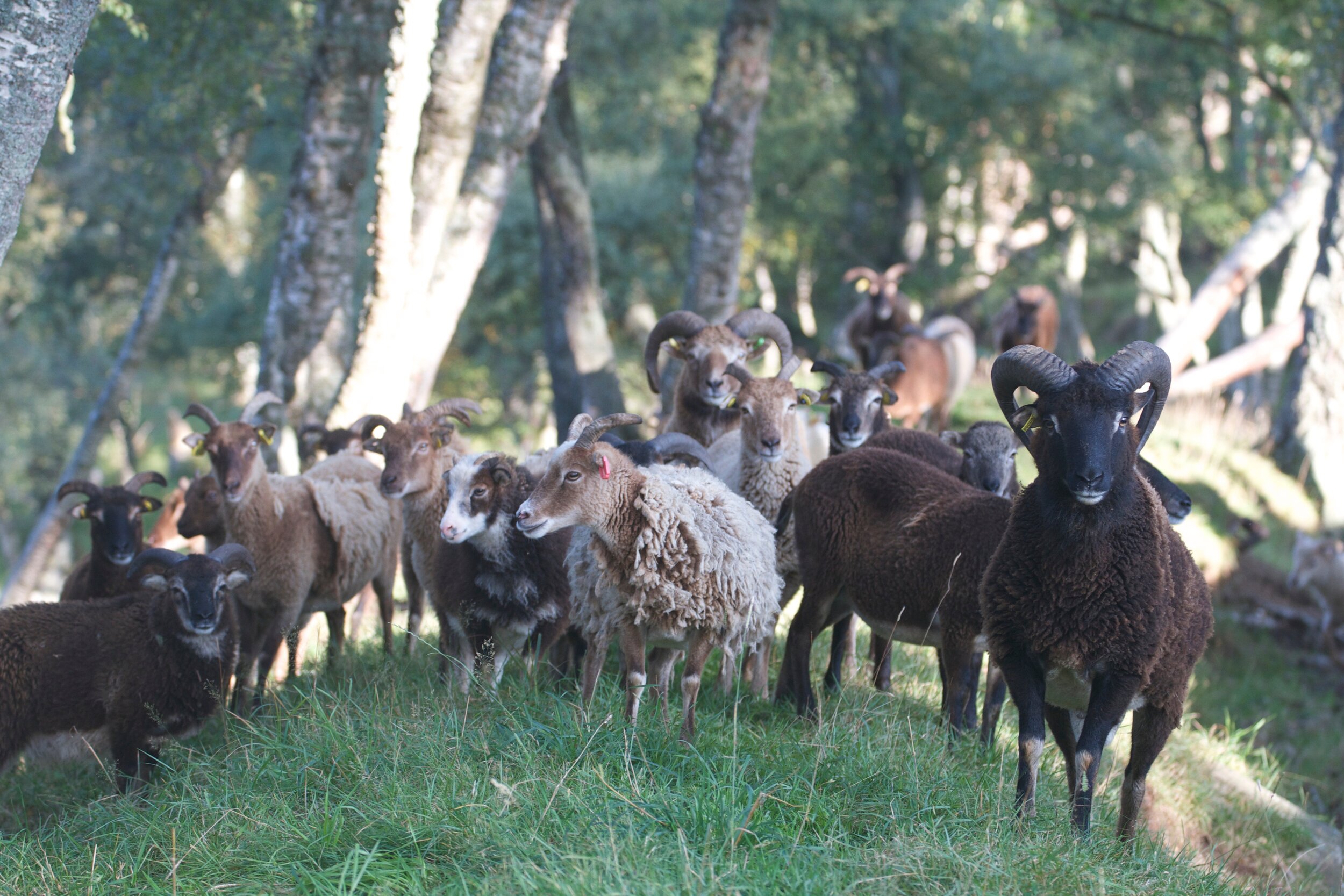Soay Sheep
Soay sheep are hardy and wild. They don’t require shearing, and do not suffer from common ailments such as foot rot and fly strike. They also rarely encounter problems lambing, making them in many ways a very low maintenance breed. However, they are exceptionally flighty so enclosures and catch ups require careful thought and management!

Soay sheep originally came from the remote island of St Kilda, found 80 miles off the west coast of Scotland. Descendents of the European Mouflon, Soay sheep are thought to have been brought to the island by early settlers thousands of yers ago. Consequently they are relatively wild sheep, with very little domestication. Alan and I have been to St Kilda twice in August 1989 and 1991 to help Cambridge University catch the Soays there for research purposes. We were taken by their hardiness and ability to survive in really tough condition and in 1995 there was an opportunity to buy a wild flock of Soays from Lundy Island. Alan drove down with our livestock truck, helped to catch them and then brought them back to our farm in the Scottish Highlands!
They are small, agile sheep and both the males and females are horned. Most importantly for us, they moult their fleeces naturally each year, so do not require shearing. They never get fly strike or suffer from foot rot, common conditions for more domesticated breeds.
They are extremely good, instinctive mothers and often have twins. They need very little help during lambing and within a few hours of being born the lambs are on their feet and running just as fast as their mothers. They are the ultimate easy-care sheep, but they do have a highly suspicious nature which makes them elusive and always a challenge to catch!
Being a small native breed of sheep they are slow to grow and we generally do not slaughter for meat until they are 1.5yrs old, by which time the carcass weight is about 12 to 15kgs. The meat is delicious and not at all fatty. We always have breeding stock and meat for sale from the farm.
